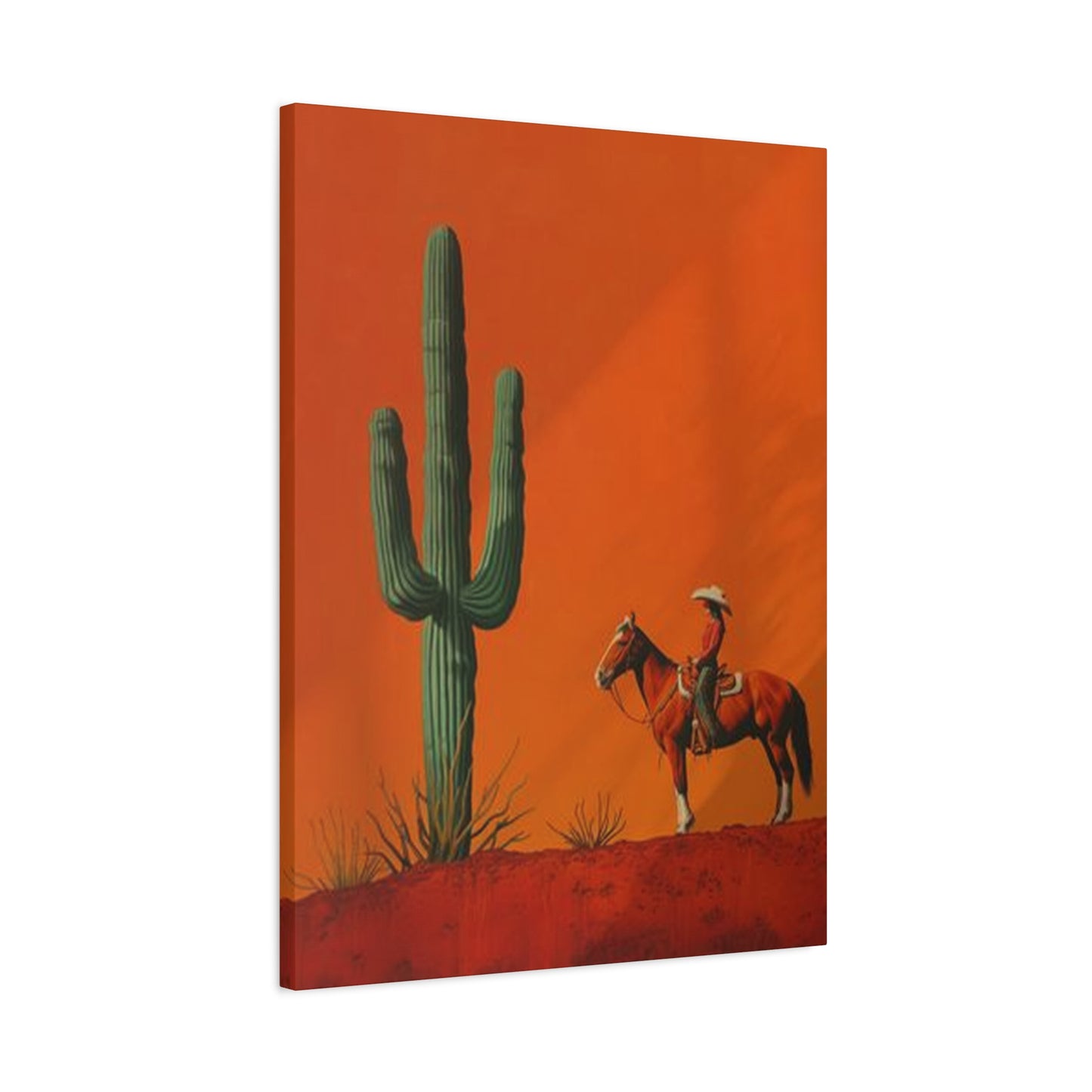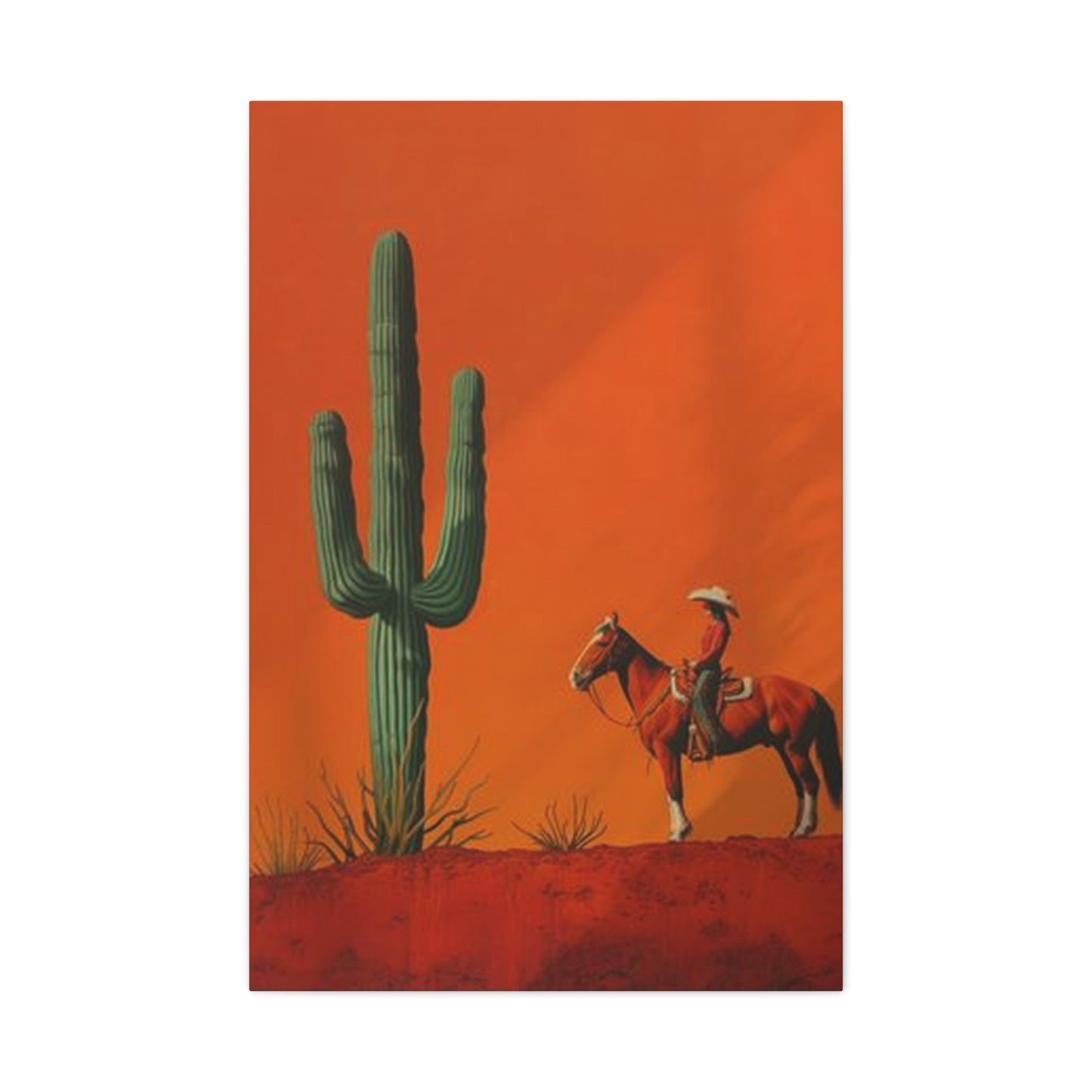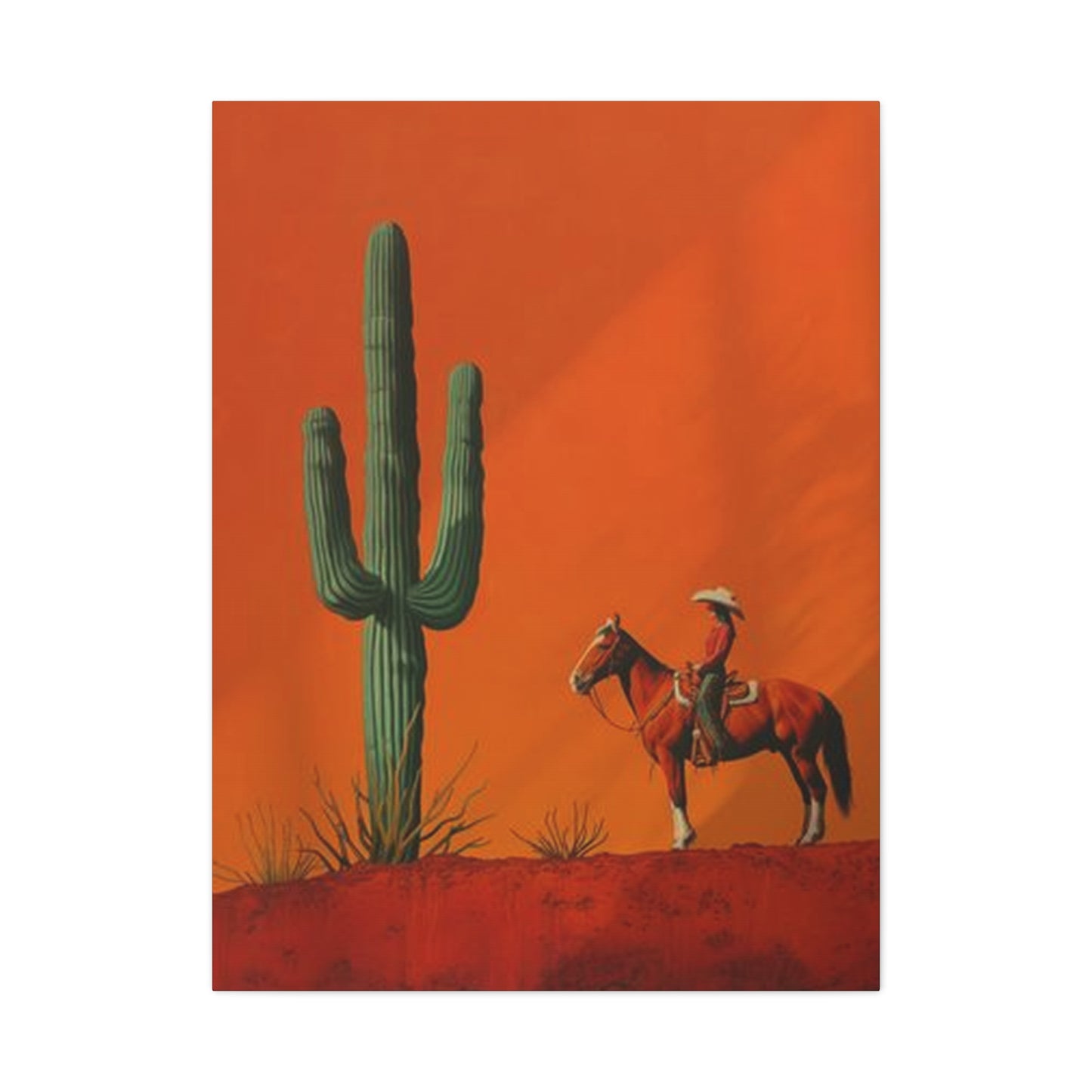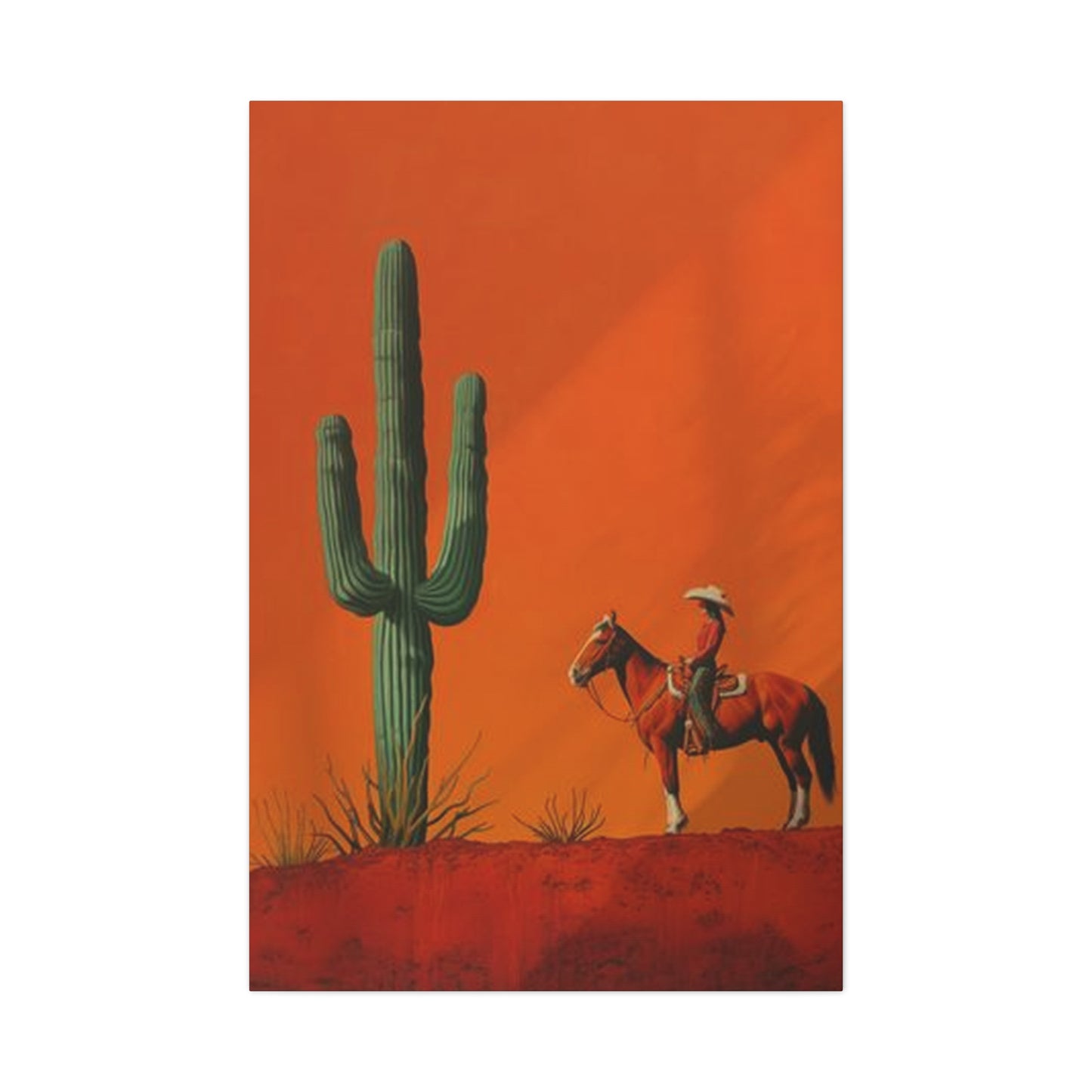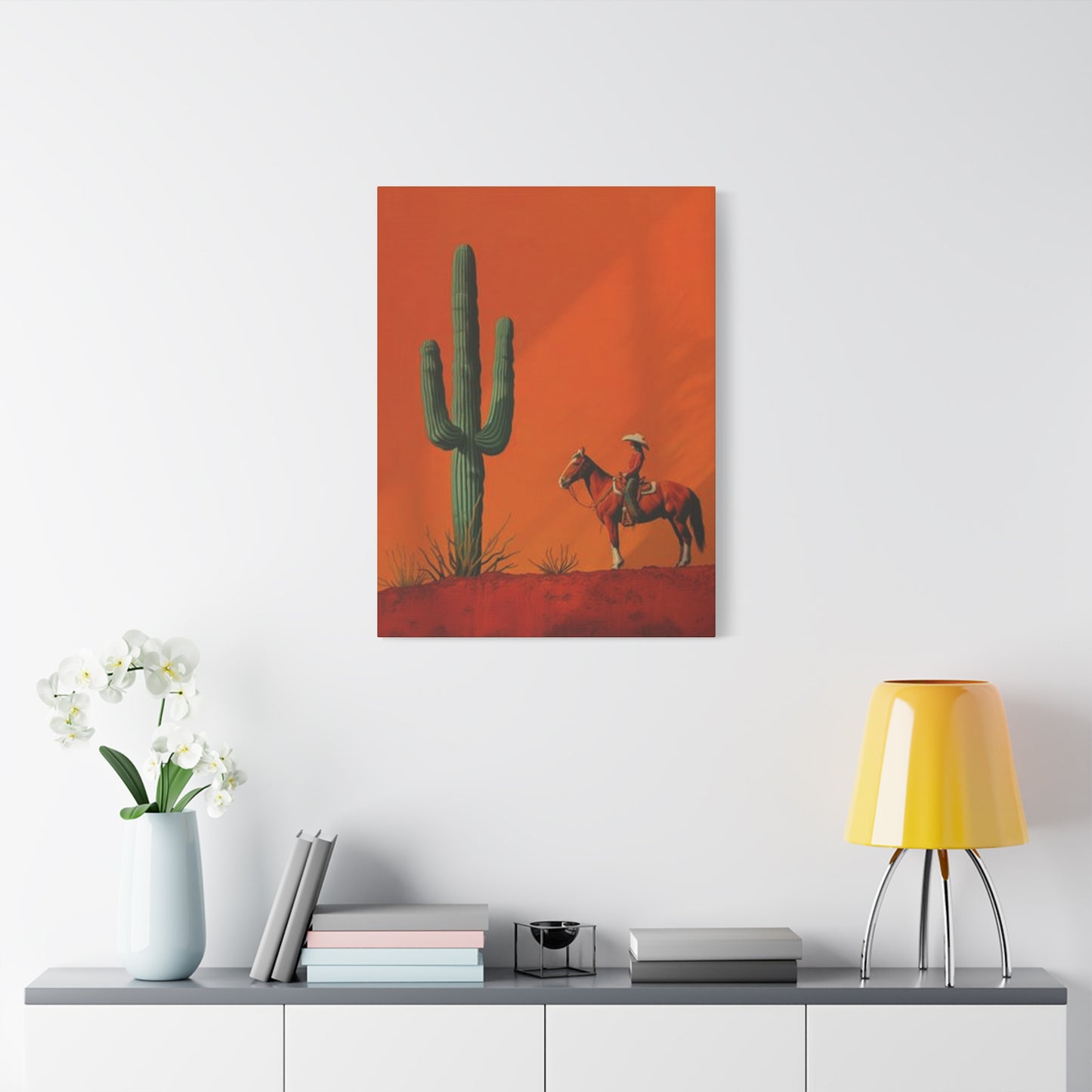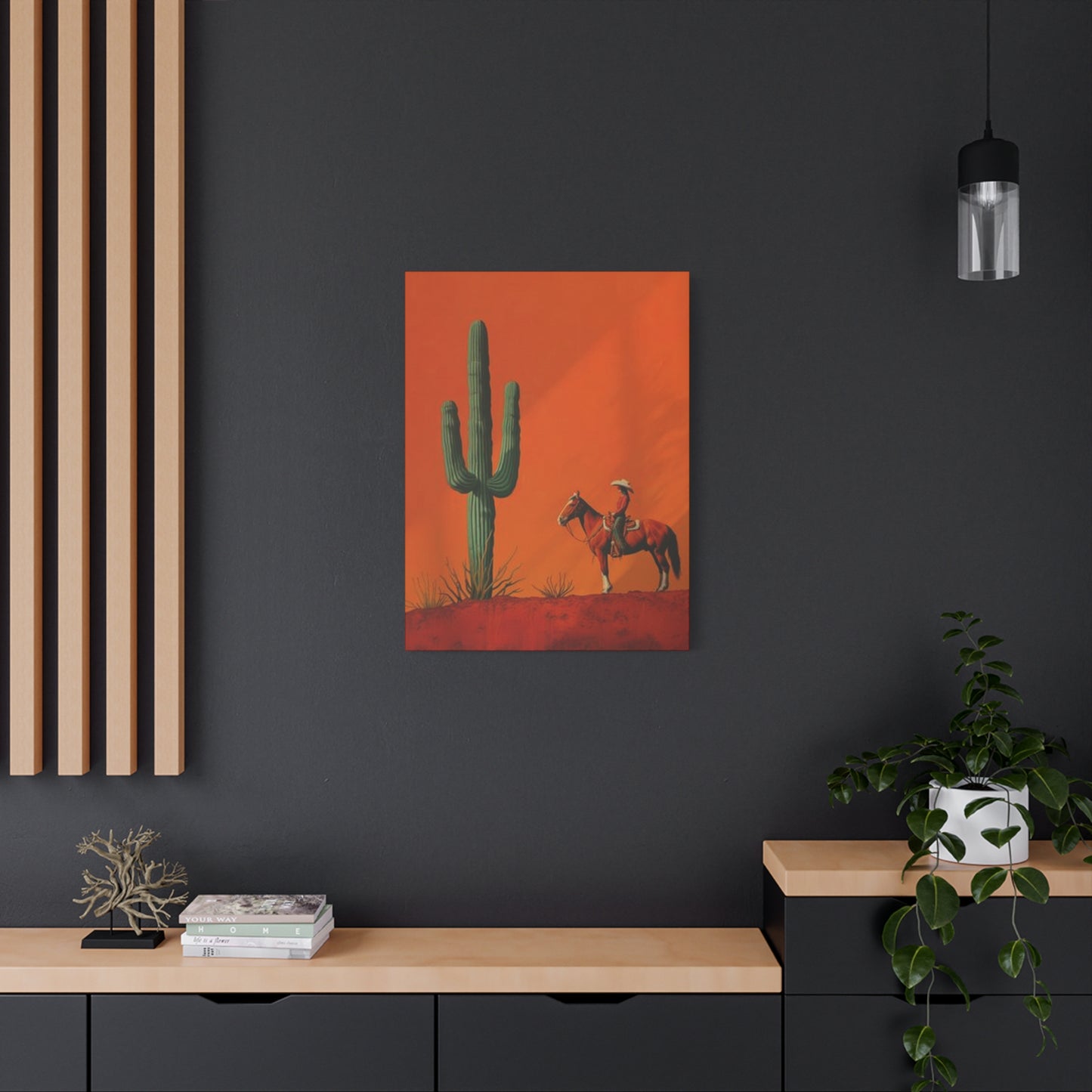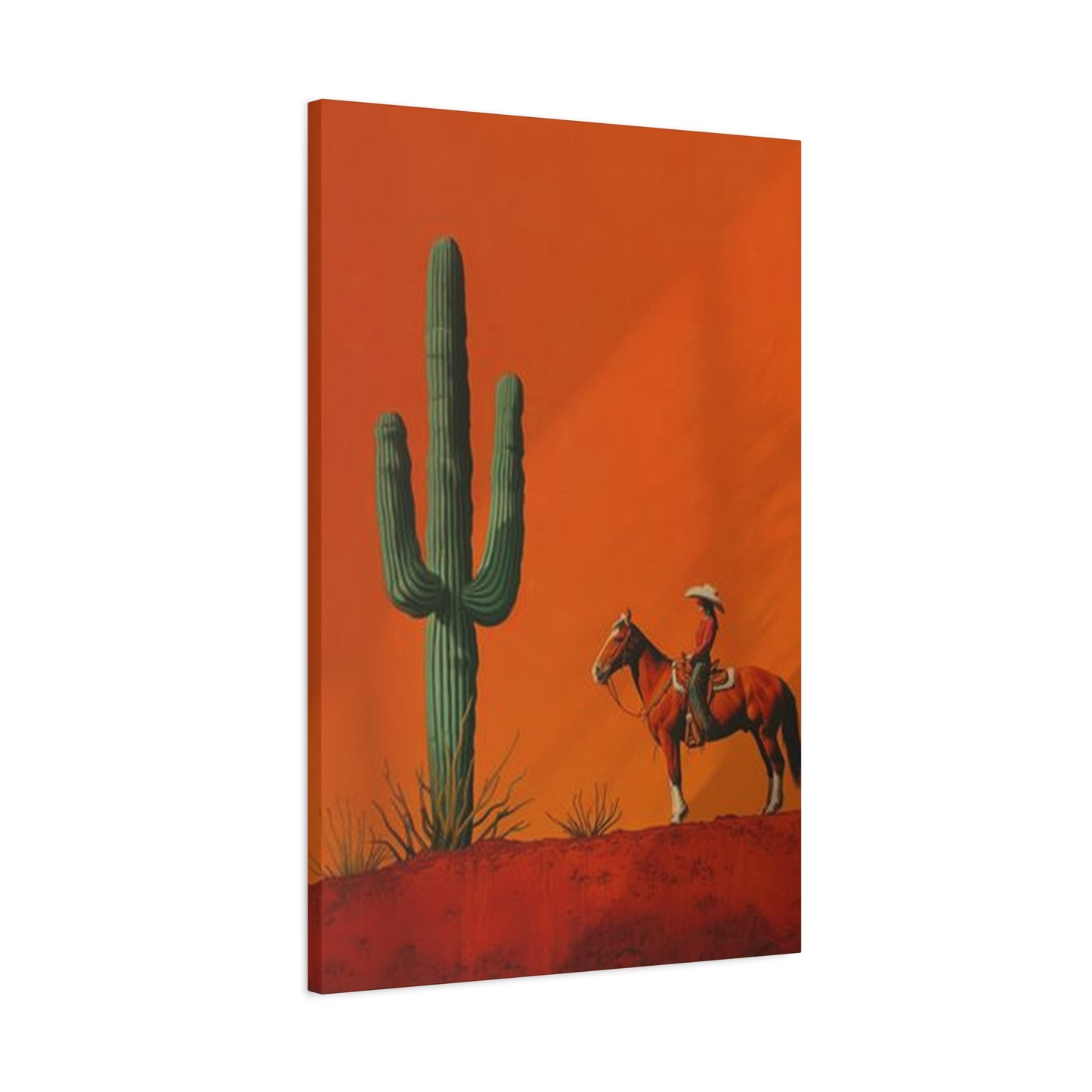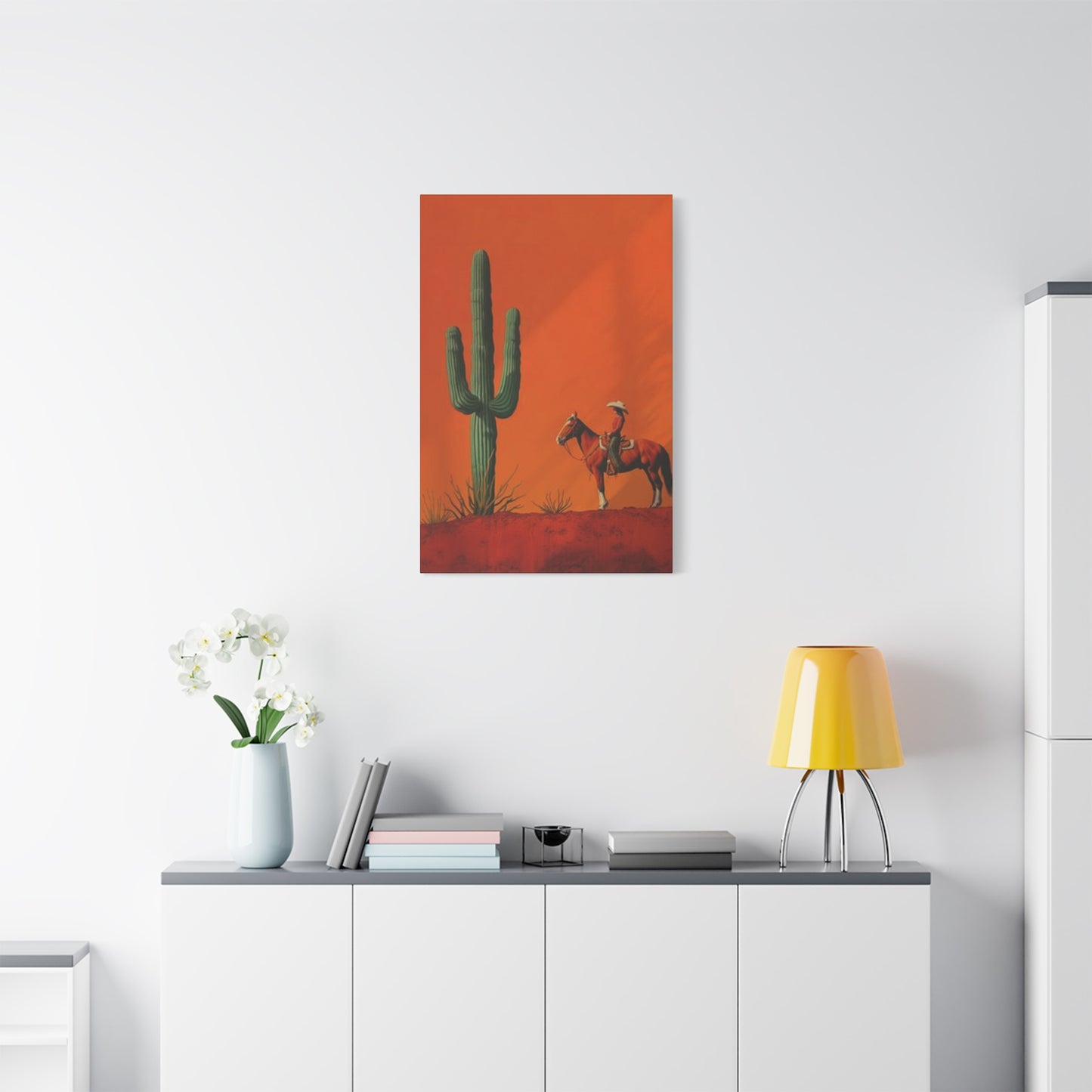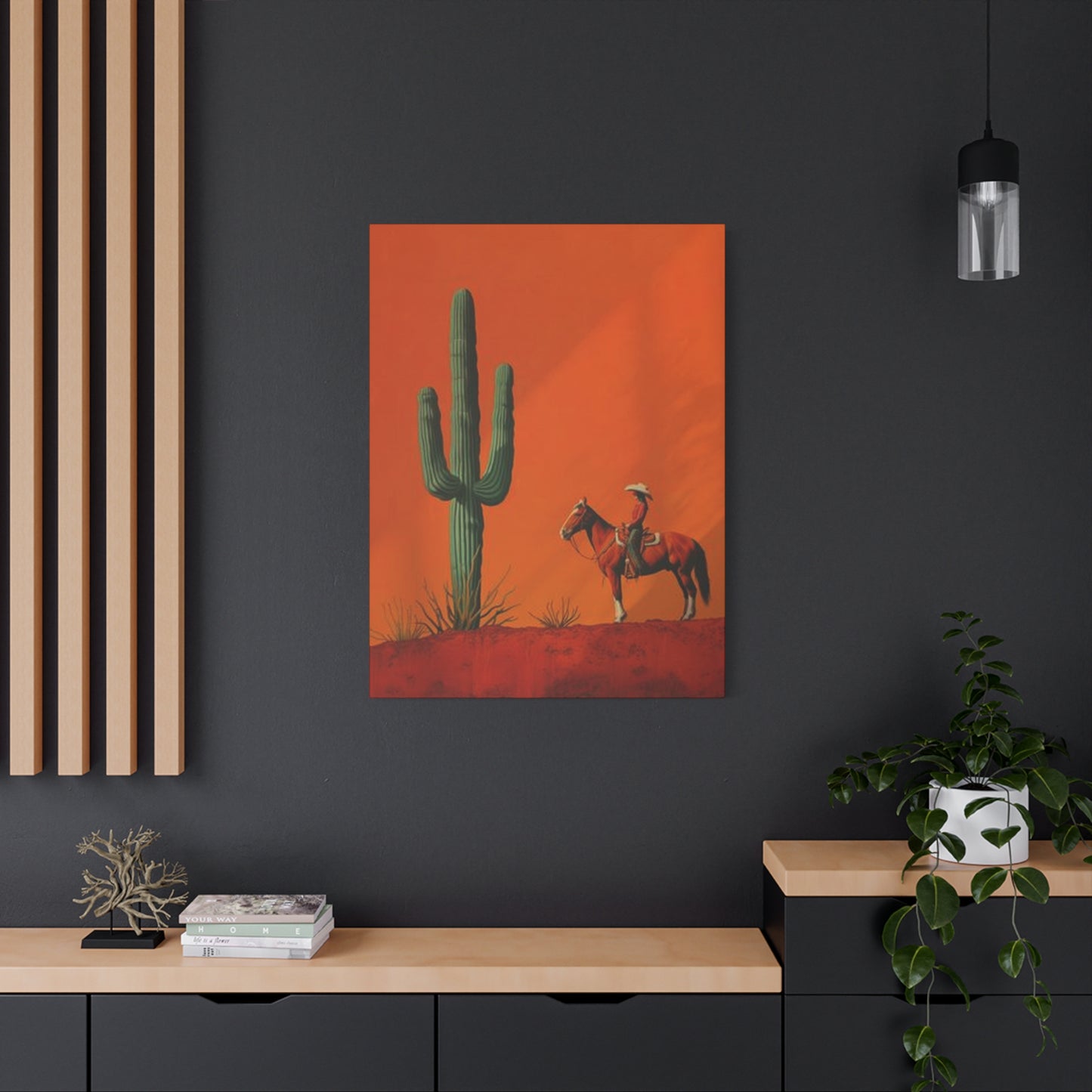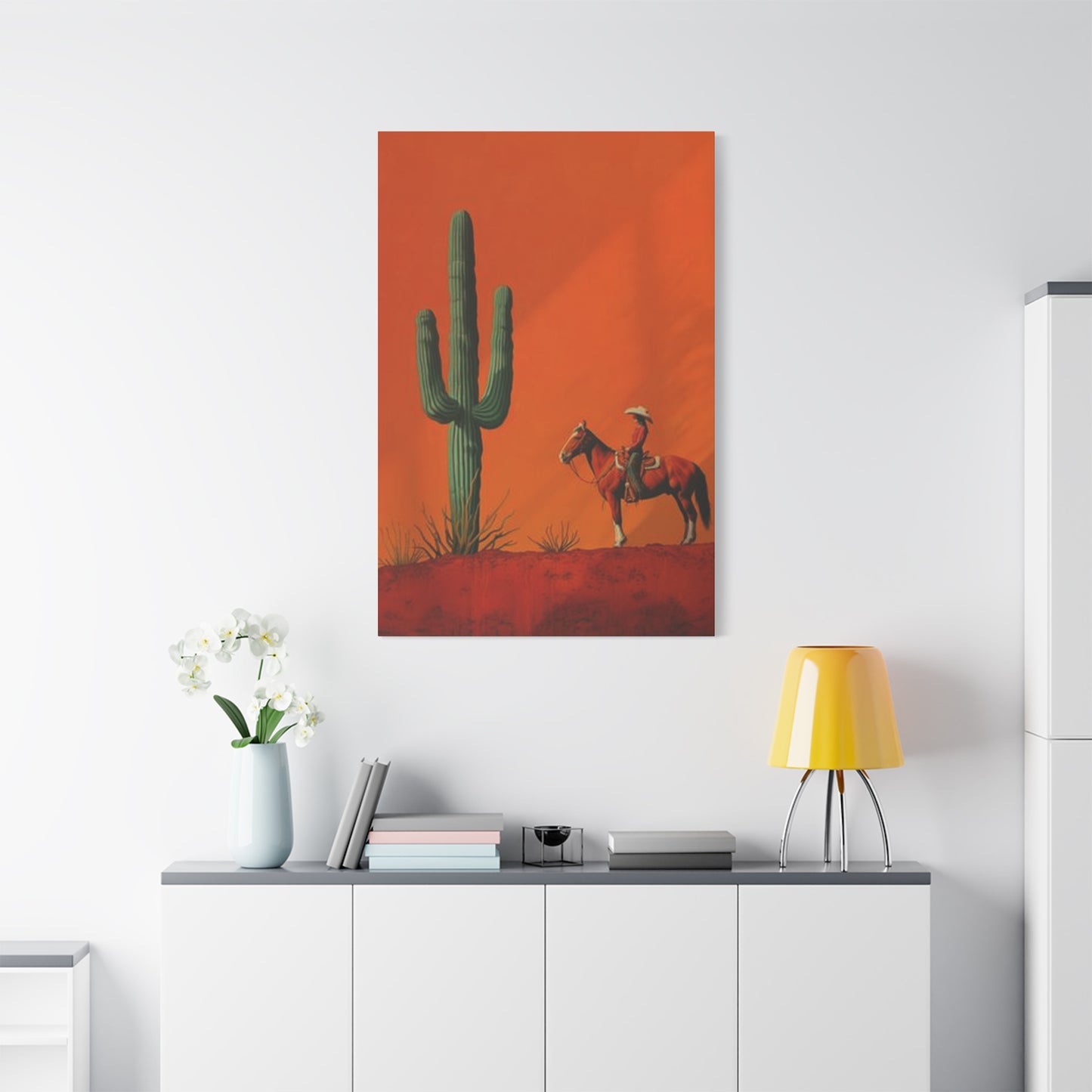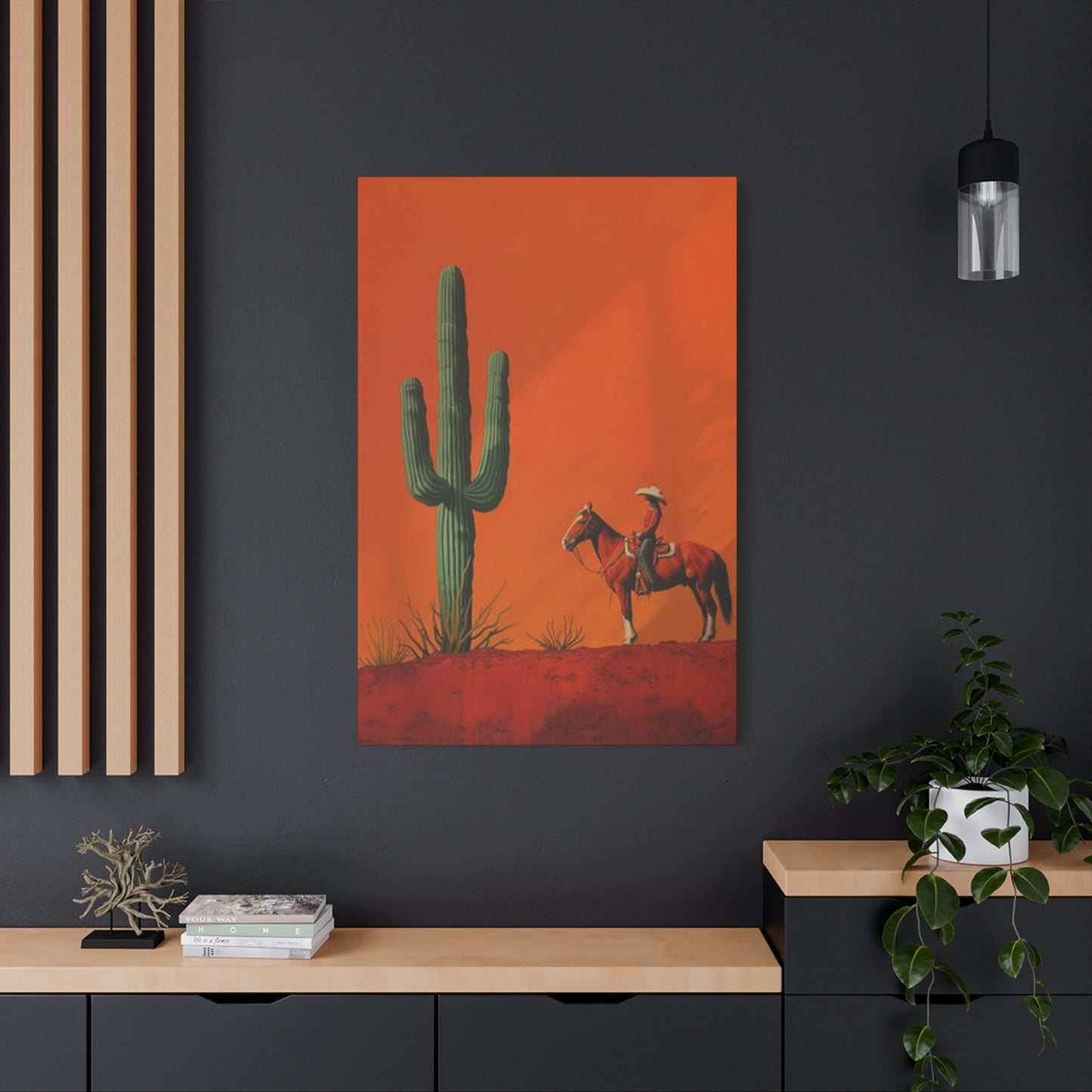Cactus & Cowgirls Wall Art & Canvas Prints
Cactus & Cowgirls Wall Art & Canvas Prints
Couldn't load pickup availability
Western Ranch Décor: Discover Authentic Cactus & Cowgirls Wall Art for Your Southwestern Home
The allure of the American West has captivated interior design enthusiasts for generations, bringing forth a distinctive aesthetic that celebrates rugged landscapes, pioneering spirit, and untamed beauty. Among the most sought-after elements in this genre stands the timeless appeal of desert-themed artwork featuring prickly succulents and fearless horsewomen. This comprehensive exploration delves into the multifaceted world of southwestern wall décor, examining its cultural significance, artistic variations, styling possibilities, and enduring popularity in contemporary living spaces.
The Enduring Appeal of Southwestern Aesthetic in Modern Interior Design Schemes
The southwestern design movement represents far more than mere decoration—it embodies a lifestyle philosophy rooted in authenticity, natural materials, and connection to earth's raw magnificence. This aesthetic draws inspiration from the vast expanses of Arizona, New Mexico, Texas, and California's desert regions, where sun-baked terrain meets endless azure skies. Homeowners increasingly gravitate toward this style because it offers respite from minimalist coldness while avoiding the clutter associated with maximalist approaches.
Desert-inspired artwork serves as the cornerstone of this decorating philosophy, anchoring rooms with bold visual statements that reflect the untamed spirit of frontier life. The imagery typically features iconic elements—towering saguaros silhouetted against crimson sunsets, weathered ranch hands astride muscular horses, or portraits of strong-willed women who carved out existence in harsh wilderness conditions. These visual narratives resonate deeply because they speak to universal themes: resilience, independence, and harmonious coexistence with nature's formidable forces.
Contemporary interpretations of this aesthetic have evolved considerably from the heavy, dark furniture and overwhelming Native American motifs that dominated 1980s and 1990s iterations. Modern southwestern style embraces lighter color palettes, cleaner lines, and more selective ornamentation. Wall artwork now takes center stage rather than competing with busy patterns and excessive accessories. This shift allows individual pieces—particularly those featuring desert flora and pioneering women—to command attention and set the tone for entire rooms.
Exploring the Rich Symbolism Behind Desert Flora and Frontier Women Imagery
Cactus imagery carries profound symbolic weight across multiple cultural contexts. These resilient plants thrive in environments that would destroy lesser vegetation, surviving scorching temperatures and months without precipitation. They've come to represent adaptability, endurance, and the capacity to flourish despite adversity. In Mesoamerican traditions, certain cactus species held sacred status, believed to connect earthly and spiritual realms. The Spanish conquistadors marveled at these peculiar plants, documenting them extensively in journals and illustrations that later influenced European botanical art.
The iconic saguaro, found exclusively in the Sonoran Desert, can live over 150 years and grow to heights exceeding forty feet. These majestic giants don't produce their first arm until they've survived approximately seventy-five years—a testament to patience and long-term growth. When featured in artwork, they evoke timelessness and stability. Smaller varieties like prickly pears, chollas, and barrel cacti each carry distinct visual characteristics that artists exploit for compositional variety and textural interest.
Cowgirl imagery similarly resonates with layered meaning. These women shattered conventional Victorian expectations, donning practical attire and mastering skills traditionally reserved for men. They roped cattle, broke horses, participated in rodeos, and managed ranches with competence equal to their male counterparts. Historical figures like Annie Oakley, Lucille Mulhall, and Patsy Montana became celebrities, demonstrating that femininity and frontier toughness weren't mutually exclusive. Contemporary artwork celebrating these pioneers appeals to viewers seeking representations of female strength that predate modern feminist movements.
The combination of cactus and cowgirl elements in single compositions creates particularly powerful visual statements. Such pieces juxtapose nature's defensive architecture (thorns and spines) with human determination, suggesting that both survive through protective adaptation. The color schemes typically associated with these subjects—terracotta, sage green, dusty rose, weathered turquoise—further enhance their appeal by introducing warmth without overwhelming brightness.
Varieties of Artistic Mediums and Styles Available in Southwestern Wall Décor
The marketplace offers remarkable diversity in how desert and ranch themes manifest visually. Photographic prints capture authentic moments—sunlight filtering through saguaro ribs, dust clouds billowing behind galloping horses, or weathered cowgirl boots resting against weathered fence posts. These realistic representations appeal to purists who appreciate documentary accuracy and nostalgic authenticity. High-quality prints using archival inks on premium paper or canvas ensure longevity, preventing the fading and deterioration that plagued earlier reproduction methods.
Illustrated artwork provides different aesthetic possibilities through deliberate stylization. Line drawings with selective coloring create clean, contemporary looks suitable for modern farmhouse or transitional interiors. Watercolor treatments yield soft, romantic interpretations that gentle the harsh desert landscape into something approachable and serene. Bold graphic designs using limited color palettes transform southwestern subjects into statement pieces appropriate for eclectic or bohemian settings.
Oil and acrylic paintings represent the premium end of this spectrum, offering unique, original works rather than reproductions. Commissioned pieces allow collectors to specify exact color schemes, compositional elements, and sizes tailored to particular spaces. The texture inherent in painted surfaces adds dimensionality impossible to achieve through flat printing processes. Impasto techniques, where paint is applied thickly enough to retain brush or palette knife marks, create dramatic interplay between light and shadow as viewing angles change throughout the day.
Mixed media approaches combine multiple materials—incorporating fabric, metal, wood, or found objects alongside traditional painting or printing. A piece might feature a printed desert landscape overlaid with actual barbed wire, leather strips, or horsehair. These three-dimensional elements break the plane of the wall surface, creating sculptural interest that draws viewers closer for detailed examination. Such works function as conversation pieces, inviting inquiries about their construction and conceptual underpinnings.
Digital art has emerged as a significant player in this field, with artists using tablets and specialized software to create illustrations indistinguishable from traditional media. This approach offers advantages including easy revision, infinite color experimentation, and seamless scaling to various dimensions without quality loss. Some digital artists maintain the spontaneity of hand-drawn work by using pressure-sensitive styluses that mimic brush behavior, while others embrace the medium's unique capabilities to achieve effects impossible through conventional methods.
Selecting the Perfect Size and Scale for Maximum Visual Impact in Your Space
Artwork dimensions dramatically affect room perception and emotional response. Oversized pieces—those measuring five feet or larger in any direction—create immediate focal points that anchor entire walls and influence furniture arrangement. These statement works suit spacious areas like great rooms, primary bedrooms, or above substantial furniture pieces such as sectional sofas or king-sized beds. When selecting extra-large artwork, consider the viewing distance; pieces intended for appreciation from across large rooms can employ broader brushstrokes and simpler compositions, while those in more intimate settings benefit from intricate details that reward closer inspection.
Medium-sized pieces, typically ranging from two to four feet in their longest dimension, offer versatility for various contexts. They work beautifully in pairs or triplets arranged symmetrically or organically across wall expanses. This middle range suits dining areas, where artwork shouldn't overwhelm table gatherings, and hallways, where multiple coordinated pieces can create gallery-style progressions. Such dimensions also accommodate rental situations or frequent redecorators who value flexibility—moving or replacing medium-sized artwork involves less commitment than repositioning enormous installations.
Smaller works measuring under two feet serve specific purposes often overlooked in decorating discourse. They excel in tight spaces like powder rooms, breakfast nooks, or narrow wall sections flanking windows and doorways. Grouping multiple small pieces into gallery walls allows collectors to showcase diverse styles, artists, or subjects within cohesive arrangements. This approach particularly suits eclectic tastes, permitting evolution of the collection over time as new pieces join existing arrangements without requiring complete redesigns.
Scale relationships between artwork and surrounding elements determine visual harmony. Designers generally recommend that artwork spanning furniture should measure approximately two-thirds to three-quarters of the furniture width below it. This proportion creates pleasing balance without the artwork appearing either lost above substantial pieces or so large it seems to crush delicate consoles or narrow sideboards. When hanging artwork on empty walls, consider the entire wall section's dimensions—a tiny piece on a vast expanse creates unfortunate "postage stamp" effects, while appropriately scaled works command space confidently.
Ceiling height influences ideal artwork proportions significantly. Standard eight-foot ceilings accommodate most artwork without issue, but taller spaces—particularly those with vaulted or cathedral ceilings—demand larger pieces or vertically oriented arrangements to avoid appearing dwarfed. Conversely, rooms with lower ceilings benefit from horizontal orientations that emphasize width rather than height, visually expanding confined spaces. Corner placements and positions above tall furniture like armoires require special consideration, as these contexts create unique sightlines and viewing angles.
Color Palette Coordination and Harmonization with Existing Room Schemes
Successful artwork selection considers existing color commitments within spaces. Southwestern palette fundamentals include warm earth tones—ochre, sienna, umber, and burnt orange—alongside cooler desert hues like sage, dusty blue, and weathered turquoise. These colors derive from natural landscape elements: red rock formations, silver-green sage brush, copper-rich soil, and vast sky gradations from pale dawn to deep twilight. Introducing artwork that echoes these tones creates cohesive environments where walls, furnishings, and decorative elements converse harmoniously.
Complementary color theory offers guidance for dynamic visual relationships. Artwork featuring prominent warm oranges and terracotta tones gains impact when positioned against walls painted in cooler sage or slate shades. The temperature contrast makes both elements more vibrant than either would appear in isolation. Similarly, cooler cactus greens intensify against warm tan or wheat-colored backgrounds. These complementary relationships create visual energy suitable for active spaces like living rooms and kitchens where stimulation enhances functionality.
Analogous color schemes employ hues adjacent on the color wheel—perhaps rust, orange, and golden yellow—to achieve harmony through similarity. Such approaches suit restful spaces like bedrooms where dramatic contrast might prove overstimulating. Artwork dominated by analogous colors integrates seamlessly with surroundings, creating serene environments that soothe rather than energize. This strategy particularly benefits those transitioning into southwestern style gradually, as analogous relationships forgive imperfect color matching between newer and existing elements.
Neutral backgrounds allow artwork to dominate color conversations entirely. White, cream, greige, or light gray walls provide blank canvases that make colorful southwestern pieces pop dramatically. This approach suits bold, saturated artwork that might clash with colored walls or collectors who change artwork seasonally or frequently. Neutral surroundings also accommodate diverse framing options without creating visual cacophony—gilded frames, rustic wood, sleek metal, or ornate carved borders all function against neutral backdrops.
Accent color extraction involves identifying minor hues within artwork and amplifying them throughout rooms via accessories, textiles, or painted accents. If a predominantly earth-toned cowgirl portrait includes touches of turquoise jewelry or denim, repeating that blue in throw pillows, ceramics, or a painted accent wall creates visual threads that unify disparate elements. This technique makes rooms feel intentionally designed rather than randomly assembled, even when pieces were acquired separately over time.
Framing Choices That Enhance Southwestern Artwork Without Overwhelming the Subject
Frame selection profoundly influences artwork presentation and integration with surrounding décor. For authentic southwestern pieces, distressed wood frames with natural finishes complement subject matter beautifully. Reclaimed barn wood, with its weathered patina and visible nail holes, enhances rustic authenticity while adding textural richness. Such frames work particularly well with photography and realistic paintings that emphasize documentation over interpretation. The aged appearance suggests the artwork itself possesses history, even when contemporary in origin.
Roughhewn timber frames featuring visible grain patterns and irregular edges suit folk art styles and more primitive interpretations of western themes. These substrates—often crafted from pine, cedar, or mesquite—celebrate woodworking imperfections as design elements rather than flaws. Corner joints might show deliberate gaps, and surfaces retain saw marks or adze textures. Such framing choices align with broader southwestern design principles valuing handcrafted character over machine-perfect uniformity.
Metal frames offer contrasting possibilities through material and finish variety. Oxidized copper develops verdigris patinas that echo desert minerals and aged architectural elements common in Spanish colonial structures. Wrought iron frames, particularly those with hand-forged details like twisted corners or hammered textures, reference ranch hardware—horseshoes, gate hinges, and branding irons. Brushed steel or aluminum frames suit contemporary southwestern interpretations, providing clean lines that honor modern sensibilities while allowing artwork to remain stylistically traditional.
Ornate carved frames might seem incongruous with southwestern simplicity, yet certain styles complement rather than conflict. Spanish colonial design embraced elaborate woodwork, particularly in religious contexts, featuring intricate scrollwork, floral motifs, and gilded highlights. Frames inspired by these traditions—perhaps darker woods with strategic gilt accents—elevate southwestern artwork to formal status appropriate for dining rooms or studies. The key lies in balancing ornamentation; frames should enhance without competing, drawing eyes toward artwork rather than demanding independent attention.
Floating frames or gallery wraps present contemporary alternatives that eliminate traditional framing entirely. Canvas prints mounted on stretcher bars with imagery continuing around sides create three-dimensional objects suitable for hanging without additional framework. This approach works beautifully with bold graphic designs or contemporary southwestern interpretations where clean presentation aligns with artistic intent. The absence of frames creates minimalist aesthetics appropriate for modern spaces while reducing costs compared to custom framing with conservation materials.
Mat board inclusion or exclusion significantly affects final presentation. Mats create breathing room between artwork and frame, preventing visual claustrophobia and providing neutral zones that ease transitions between piece and surroundings. Wider mats—three to four inches—lend formal gravity suitable for finer art prints, while narrower mats or their complete absence suit casual, rustic presentations. Mat colors typically echo either artwork tones or surrounding wall colors, with warm creams and tans proving popular for southwestern pieces. Textured mats incorporating linen or burlap substrates add tactile interest that complements rustic subjects.
Strategic Placement Considerations for Different Rooms Throughout Your Home
Living rooms demand commanding presence pieces that establish atmospheric tone immediately upon entry. Above seating arrangements represents prime real estate—the first place eyes travel when scanning rooms. Large horizontal pieces work ideally above sofas, while vertical orientations suit spaces flanking fireplaces or between windows. Consider sightlines from multiple positions; artwork visible from kitchen pass-throughs or adjacent hallways should present attractively from those angles, not just from direct frontal viewing. Lighting dramatically affects appreciation, so prioritize walls where natural or artificial illumination enhances rather than creates glare on glass or glossy surfaces.
Bedroom artwork selections should promote intended atmosphere—restful sanctuaries benefit from serene compositions with muted palettes, while those preferring energizing morning environments might choose more vibrant interpretations. Positioning artwork opposite beds creates focal points for contemplation during quiet moments, while placement above headboards requires careful scale consideration to avoid oppressive feelings. Dual pieces flanking beds suit symmetrical preferences, particularly in primary suites with coordinated nightstands and lamps. Guest rooms offer opportunities for bolder choices that guests encounter fresh without daily overexposure risks.
Dining areas present unique challenges and opportunities regarding artwork placement. Pieces here compete with table settings, floral arrangements, and meal presentations for attention, suggesting artwork shouldn't overwhelm with excessive color saturation or chaotic compositions. Landscapes with horizon lines create calming backgrounds for gatherings, while portraits of historical figures can prompt conversation without dominating discussions. Positioning artwork at appropriate heights relative to seated diners matters—pieces hung too high appear disconnected from the space, while those too low create awkward sightlines during meals.
Home offices benefit from motivational imagery that reinforces productivity without causing distraction. Western themes emphasizing perseverance, pioneering spirit, and connection to nature can inspire without the aggressive corporate aesthetics of typical motivational posters. Positioning artwork within peripheral vision rather than direct sightline prevents constant distraction while providing objects for visual breaks during screen-intensive work. Smaller complementary pieces on shelving units or filing cabinets extend themes without requiring additional wall space.
Bathrooms traditionally receive minimal artwork attention, yet these private spaces offer excellent opportunities for smaller southwestern pieces that might appear insignificant in grander rooms. Moisture concerns necessitate appropriate materials—canvas prints without glass work better than paper under glass in humid environments. Powder rooms, being semi-public spaces where guests spend brief solitary moments, suit whimsical or conversation-starting pieces that might prove too quirky for main living areas.
Hallways and staircases function as transitional galleries connecting distinct living zones. Progressive series—perhaps depicting different cactus species or various aspects of ranch life—create visual narratives that accompany movement through homes. Stairwell walls pose hanging challenges due to sloped orientations; stepped arrangements following stair angles often look intentional and dynamic rather than awkwardly forced. Adequate lighting in these typically dimmer areas ensures artwork receives proper visibility rather than disappearing into shadow.
Complementary Décor Elements That Reinforce Southwestern Themes Throughout Spaces
Textile selections dramatically support or undermine southwestern artwork effectiveness. Navajo-inspired blankets with geometric patterns in traditional colors—red, black, white, and natural wool tones—create powerful visual connections to regional heritage. These can drape sofas, serve as wall hangings themselves, or function as area rugs defining conversation zones. Cowhide rugs provide authentic ranch references while offering neutral backdrops that won't compete with colorful wall art. Their irregular organic shapes break up the rigid geometry of furniture arrangements, introducing visual interest through form rather than pattern.
Leather upholstery and accents establish immediate western atmosphere through material alone. Full leather sofas and chairs make substantial statements, though their expense and weight might prove prohibitive. Strategic leather deployment via throw pillows, ottoman covers, or accent chairs achieves similar effects more affordably. Weathered brown leather with visible grain and natural imperfections appears more authentic than uniform, heavily processed alternatives. Pairing leather with rougher natural fabrics—burlap, raw linen, or loose-weave cottons—creates textural contrasts that add depth to design schemes.
Pottery and ceramics offer dimensional southwestern reinforcement through both form and decoration. Traditional Pueblo styles with distinctive black-on-black designs or polychrome geometric patterns connect to ancient artistic traditions predating European contact. Contemporary potters reinterpret these forms, creating vessels that honor heritage while embracing individual artistic visions. Groupings of varying sizes and shapes on shelves, mantels, or console tables create vignettes that echo colors and themes from wall artwork while adding sculptural interest.
Metalwork accessories reference ranch hardware and Spanish colonial architectural elements. Wrought iron candle holders, wall sconces, curtain rods, and decorative brackets introduce dark linear elements that ground lighter color schemes. Copper accents—whether planters, bowls, or decorative trays—develop rich patinas over time, adding living elements that evolve with environments. Tin work, particularly punched or embossed pieces creating lanterns or mirror frames, references Mexican folk art traditions deeply influential in southwestern design evolution.
Wood furnishings and architectural elements anchor spaces with substantial natural presence. Heavy timber beams—whether structural or merely decorative—create horizontal lines that balance vertical wall artwork. Distressed wood tables, chests, and shelving units continue material themes from rustic frames while providing functional storage and display surfaces. Furniture pieces constructed from mesquite, pine, or reclaimed barn wood demonstrate quality craftsmanship aligned with southwestern values of durability and honest materials.
Living plants, particularly desert species, create direct connections to landscapes depicted in artwork. Potted cacti and succulents require minimal maintenance while providing genuine botanical specimens that three-dimensional representations in paintings lack. Larger floor plants like ponytail palms or Joshua trees (where climate permits) make dramatic statements, while smaller varieties cluster effectively on windowsills or shelving. The living nature of these elements adds vitality, demonstrating that southwestern design celebrates life adapted to harsh conditions rather than romanticizing empty wasteland.
Lighting Strategies That Showcase Artwork While Creating Ambient Atmosphere
Natural light represents the ideal illumination source when controllable and non-damaging. South-facing walls receive consistent daylight throughout days, though this exposure risks fading over decades for pieces using non-archival materials. East-facing positions enjoy gentle morning light that gradually intensifies, while western exposures face harsh afternoon sun requiring window treatments that diffuse intensity. North-facing walls receive most even, coolest natural light—preferred by painters for studios because it changes least throughout days and seasons.
Picture lights mounted directly above or below frames provide focused illumination that highlights artwork while creating warm ambient glow. Traditional brass or bronze picture lights suit ornate frames and formal settings, while simpler designs in brushed nickel or oil-rubbed bronze complement rustic southwestern pieces. LED picture lights offer advantages including minimal heat generation (protecting artwork from damage), energy efficiency, and long lifespans reducing maintenance. Adjustable models allow precise aiming to eliminate glare from glass surfaces while illuminating artwork evenly.
Track lighting systems provide flexible solutions accommodating changing artwork arrangements or collections growing over time. Individual fixtures swivel and adjust along tracks, permitting precise positioning as needs evolve. This approach suits gallery walls or spaces where artwork rotates seasonally. Modern track systems have shed industrial aesthetics, now available in styles ranging from minimalist contemporary to rustic bronze finishes appropriate for southwestern interiors. Dimming capabilities allow adjustment for different occasions—brighter for daytime viewing, subdued for evening ambiance.
Recessed ceiling fixtures create clean appearances without visible hardware intruding on sightlines. When positioned approximately thirty inches from walls and aimed at sixty-degree angles, recessed lights illuminate artwork effectively while minimizing glare. This approach requires planning during construction or renovation but provides permanent solutions that integrate seamlessly with architecture. Multiple fixtures spaced appropriately light entire walls uniformly, eliminating the focused spotlighting effect some find theatrical or excessive.
Ambient room lighting affects artwork perception even when not directly illuminating pieces. Warm-toned general lighting—achieved through bulb selection or fixture design—enhances earth tones and warm southwestern palettes, making ochres, siennas, and terracottas more vibrant. Conversely, cooler lighting temperatures emphasize blues, greens, and grays, potentially deadening warm colors. Layered lighting combining ambient, task, and accent sources creates dimensional environments where lighting serves multiple purposes while properly showcasing wall art.
Natural light control through window treatments prevents damage while maintaining flexibility. Sheer curtains or solar shades reduce UV exposure and harsh glare without completely blocking daylight. These solutions preserve views and natural illumination while protecting artwork, textiles, and wood furnishings from sun damage. Exterior solutions like awnings or strategically planted deciduous trees block summer sun while permitting lower-angle winter light that poses less fading risk and provides welcome warmth.
Caring for Your Southwestern Artwork to Ensure Lasting Beauty and Value Preservation
Dust accumulation represents the most common threat to framed artwork, settling on horizontal surfaces including frame tops and glass. Regular gentle dusting with microfiber cloths prevents buildup that can scratch glass when eventually removed. For unframed canvas pieces, soft artist brushes designed for delicate surface cleaning remove dust without damaging paint layers. Avoid household dusting sprays containing oils or chemicals that can migrate onto artwork surfaces causing permanent damage.
Glass and acrylic glazing require different cleaning approaches. Glass tolerates standard cleaning solutions applied to cloths rather than sprayed directly, which risks liquid seeping under frames onto artwork. Ammonia-free formulas prevent degradation of frame finishes or mat boards. Acrylic glazing scratches more easily than glass, demanding extra gentleness. Specialized acrylic cleaners and extremely soft cloths minimize scratching risks. Static electricity makes acrylic attract dust more aggressively than glass, necessitating more frequent cleaning.
Environmental conditions dramatically affect artwork longevity. Relative humidity ideally ranges between 40-50 percent—levels preventing both desiccation cracking and mold growth. Homes in arid southwestern regions often require humidification during dry seasons, while humid climates need dehumidification. Temperature stability matters more than specific temperatures; fluctuations cause expansion and contraction that stress materials. Avoid hanging artwork above heat sources like fireplaces, radiators, or heating vents, and keep pieces away from air conditioning ducts blasting cold air directly onto surfaces.
Sunlight exposure requires vigilant monitoring. Even artwork displayed on walls receiving no direct sun suffers cumulative ambient light damage over years. Ultraviolet radiation causes most photodegradation, breaking down pigments, papers, and binders. UV-filtering glass or acrylic glazing blocks approximately 99 percent of harmful rays, dramatically extending artwork lifespans. Museum-quality conservation framing incorporates these materials alongside acid-free mats and backings, creating protective micro-environments around artwork.
Physical damage prevention involves strategic placement and appropriate hanging hardware. High-traffic areas pose collision risks from people, pets, and moving objects like vacuum cleaners or children's toys. Proper hanging hardware—heavy-duty picture hooks, wall anchors for drywall, or appropriate fasteners for plaster or masonry—prevents accidents from inadequate support. Earthquake-prone regions require additional securing measures like museum putty or specialized hanging systems with safety catches preventing pieces from falling during tremors.
Professional conservation becomes necessary when artwork shows deterioration signs—fading colors, yellowing paper, mold spots, tears, or unstable paint. Attempting amateur repairs often worsens damage irreversibly. Qualified conservators assess conditions, recommend treatments, and execute repairs using reversible methods and archival materials. While conservation expenses can seem substantial, they're insignificant compared to replacing damaged or destroyed artwork, particularly for irreplaceable originals or limited editions appreciating in value.
Sourcing Authentic Southwestern Artwork From Reputable Artists and Vendors
Direct relationships with artists offer numerous advantages including authenticity assurance, background stories enhancing appreciation, and potential commission opportunities for customized pieces. Many southwestern artists maintain studios open for visits, where buyers view working processes and available inventory. These interactions create connections impossible through intermediary purchases, transforming artwork from mere decoration into meaningful possessions with known provenance. Artist websites and social media accounts provide convenient access even for geographically distant admirers, with many offering online sales, virtual studio tours, and shipping services.
Galleries specializing in southwestern and western art curate selections ensuring quality and authenticity while providing environments for proper viewing. Knowledgeable staff offer guidance matching collectors with appropriate pieces considering aesthetic preferences, space requirements, and budget constraints. Gallery representation benefits artists through exposure and sales infrastructure while providing buyers with confidence in legitimacy—reputable galleries don't risk reputations by selling fraudulent or misrepresented work. Limited edition prints purchased through galleries often include certificates of authenticity documenting edition sizes and artist signatures.
Art fairs and shows concentrate multiple artists and vendors in single locations, facilitating comparisons and discoveries impossible through individual studio visits. Major southwestern art markets occur annually in cities like Santa Fe, Scottsdale, and Tucson, attracting nationally and internationally recognized talents alongside emerging artists. These events create festival atmospheres celebrating regional culture through art, music, food, and demonstrations. Buyers benefit from competitive pricing as artists and galleries recognize purchase opportunities that don't require waiting for customers to discover individual locations.
Online marketplaces dramatically expand access to southwestern artwork regardless of buyer location. Platforms specializing in art connect artists globally with collectors, though this convenience introduces authentication challenges. Reputable sellers provide detailed provenance information, clear return policies, and secure payment processing protecting buyers. Customer reviews and ratings help identify trustworthy vendors, though sophisticated fraud exists requiring vigilance. Purchasing from established online galleries with physical locations provides additional security compared to individual sellers with minimal digital footprints.
Estate sales and auctions offer opportunities acquiring vintage southwestern pieces potentially unavailable through contemporary sources. Older works may demonstrate styles, subjects, or techniques less common in current production, appealing to collectors seeking distinctive pieces. However, condition assessment becomes crucial—restoration costs can exceed auction prices for damaged works. Auction fever can drive prices beyond reasonable levels, so establishing firm budget limits before bidding prevents regrettable overspending. Provenance research helps authenticate pieces and understand their historical context, potentially revealing significant artists whose works appreciate substantially.
Custom commissions allow collectors to obtain exactly desired artwork when available inventory doesn't satisfy specific visions. Many artists accept commissions, creating original pieces to buyer specifications regarding size, color palette, subject matter, and composition. This process requires clear communication, typically involving preliminary sketches for approval before proceeding to final work. Commission timelines vary from weeks to months depending on artist schedules and work complexity. Though custom pieces command premium prices over comparable catalog works, the resulting perfect fit for specific spaces and personal preferences often justifies additional investment.
Understanding Various Artistic Interpretations From Traditional to Contemporary Expressions
Traditional realistic portrayals document southwestern landscapes, wildlife, and people with photographic accuracy, appealing to those valuing authentic representations over stylized interpretations. Artists working in this mode master technical skills rendering light, texture, and proportion convincingly, creating windows into desert environments and ranch life. Historical accuracy matters to traditional practitioners—depicting period-appropriate clothing, tack, architecture, and tools. These works attract collectors appreciating craftsmanship and those seeking educational value alongside aesthetic pleasure, as accurate depictions preserve cultural knowledge about disappearing lifestyles.
Impressionistic southwestern art prioritizes capturing emotional essence and atmospheric conditions over literal accuracy. Loose brushwork suggests forms rather than delineating them precisely, while color choices emphasize mood more than objective reality. A sunset landscape might employ more saturated oranges and purples than actual sunsets display, intensifying emotional impact. This approach permits greater artistic license, freeing creators from documentary constraints while maintaining recognizable southwestern character. Impressionistic works often feel more alive and energetic than traditional pieces, their visible brushstrokes and color liberties revealing artistic presence within scenes.
Abstract interpretations distill southwestern themes to essential elements—color, line, shape, texture—creating non-representational compositions nonetheless evoking desert and ranch associations. A piece might employ rust and sage colors in geometric formations suggesting canyon layers and sky without depicting recognizable landscapes. These works challenge viewers differently than representational art, requiring active engagement to extract meaning rather than passive recognition. Abstract southwestern art suits contemporary interiors where literal cowboy imagery might clash with modern furniture and architectural elements, providing thematic connections through subtler means.
Folk art and naive styles embrace intentional technical simplification, often featuring flattened perspectives, disproportionate scales, and bold colors applied in flat planes without sophisticated modeling. This aesthetic connects to self-taught artists working outside formal traditions, creating authentic personal expressions unburdened by academic conventions. Southwestern folk art frequently incorporates cultural elements from Hispanic, Native American, and Anglo traditions, resulting in visually distinctive works referencing multiple heritage streams simultaneously. These pieces convey charm, humor, and directness often absent from more serious fine art approaches.
Contemporary fusion styles blend southwestern themes with other aesthetic movements—perhaps combining desert landscapes with street art's bold graphics and spray paint techniques, or merging cowgirl portraits with pop art's vibrant colors and repetition. These experimental approaches attract younger collectors and those seeking southwestern connections without full stylistic commitment to traditional western décor. Fusion pieces function as conversation bridges between different artistic interests, making southwestern themes accessible to audiences who might dismiss purely traditional western art as unsophisticated or overly nostalgic.
Minimalist southwestern interpretations strip subjects to bare essentials, perhaps representing cactus forms through simple black silhouettes or suggesting vast landscapes through subtle color gradations on otherwise empty canvases. This restraint aligns with contemporary preferences for uncluttered aesthetics while maintaining thematic connections to the region. Minimalist pieces work exceptionally well in modern spaces where busier traditional southwestern art might introduce unwanted visual complexity. The challenge for artists working in this mode involves maintaining interest and impact despite radical simplification—too much reduction risks becoming generic rather than meaningfully southwestern.
Color Psychology and Emotional Responses Evoked by Different Palette Choices
Warm earth tones dominating much southwestern artwork create feelings of groundedness, stability, and connection to natural world. Terracotta and rust shades derive from iron oxide in soils and rocks, literally representing earth itself. These colors promote comfort and security, making spaces feel enveloping rather than stark. Physiologically, warm colors slightly increase heart rate and energy levels, making them appropriate for social spaces like living rooms and kitchens where animation and interaction are desired. However, excessive warmth can feel oppressive in small spaces or hot climates, requiring balance through cooler accent tones.
Cool desert blues and greens provide essential contrast and relief in southwestern palettes. Sage green, derived from actual sagebrush foliage, introduces calm and rejuvenation associated with vegetation and plant life. Blue tones reference vast southwestern skies and rare precious water sources, evoking openness, freedom, and spiritual transcendence. These cooler hues psychologically recede, making walls appear more distant and rooms more spacious. Bedrooms benefit particularly from cool color influences, as they promote relaxation and quality sleep better than stimulating warm tones.
Neutral tones—creams, tans, beiges, and grays—provide visual rest and sophisticated backgrounds allowing other colors to shine. Southwestern applications frequently employ warmer neutrals with slight yellow, pink, or orange undertones rather than cool gray-based neutrals. These warm neutrals feel organic and inviting, compatible with rustic wood tones and natural materials central to southwestern design. Neutrals also offer tremendous versatility, working with virtually any accent color scheme and adapting as preferences evolve without requiring complete redecorating.
Vibrant accent colors—turquoise, coral, deep purple, bright yellow—inject energy and personality when used judiciously. These saturated hues reference Native American jewelry, Mexican textiles, and intense desert wildflower blooms. Small doses create focal points and prevent earth-tone schemes from becoming monotonous, but overuse risks garishness undermining sophisticated southwestern aesthetics. Strategic placement of vibrant accents in artwork draws eyes to featured pieces, establishing clear focal points within rooms.
Black and dark brown provide grounding and definition, preventing southwestern palettes from appearing washed out or insipid. These dark neutrals create contrast that makes lighter colors appear brighter and more dimensional. In artwork, dark tones might render silhouetted forms against lighter backgrounds or provide shadows adding depth to compositions. Furniture and accessories in dark finishes anchor lighter color schemes, preventing spaces from feeling ungrounded or ephemeral.
Monochromatic schemes using single color families in varying shades and intensities create sophisticated cohesive looks demonstrating restraint and intentionality. A room might employ rust tones from pale peach to deep terracotta, with artwork reinforcing this limited palette. While potentially less dynamic than multicolor approaches, monochromatic southwestern schemes achieve elegance and calm particularly suitable for formal spaces or restful bedrooms. Success requires careful attention to textural variety, as limited color diversity demands dimensional interest through material and surface variations.
Final Thoughts
Western ranch décor, especially when incorporating cactus and cowgirls wall art, offers a dynamic way to bring the rugged beauty and free-spirited charm of the Southwest into your home. This combination of rustic imagery and iconic symbols of the Western lifestyle creates a unique blend of adventure, history, and nature that’s both timeless and deeply rooted in the cultural fabric of the American West. By integrating cactus and cowgirls artwork into your home’s design, you invite not only a visual statement but also a sense of storytelling, capturing the essence of the desert, the strength of cowgirls, and the wild, untamed landscapes of the ranching world.
Cactus wall art, with its bold lines and striking forms, embodies the resilience and beauty of the desert, where these iconic plants thrive against all odds. Paired with the strong, independent figure of a cowgirl, this art style becomes a powerful visual narrative of the rugged West. Cowgirls, often depicted in dynamic, action-filled poses or tranquil moments of solitude, symbolize the spirit of the frontier—brave, determined, and fiercely self-reliant. Together, cactus and cowgirls wall art reflects the heart of Western culture, where the forces of nature and human endurance come together in a beautiful dance of harmony and strength.
The beauty of this kind of art is its versatility in decorating. Whether you're looking to evoke a sense of adventure, create a peaceful desert-inspired retreat, or simply add warmth and character to your living space, cactus and cowgirls wall art provides endless options for expression. Large, bold prints of cowgirls on horseback, silhouetted against a desert sunset, make a dramatic statement in an entryway or living room, setting the tone for the rest of the décor. On the other hand, smaller, more intimate pieces—such as detailed drawings of cacti and cowgirls in quiet moments—can be paired together to form a gallery wall that adds depth and personality to any room.
Beyond their aesthetic beauty, cactus and cowgirls wall art also carries deep symbolic meaning. The cactus, which can survive in the harshest desert conditions, becomes a symbol of perseverance and strength. Similarly, the cowgirl, often depicted in images of both independence and grace, represents the spirit of determination, resilience, and a deep connection to the land. The combination of these two elements offers a powerful visual reminder of the endurance required to navigate both the wilderness and the challenges of life. Incorporating this art into your home not only enhances its look but also infuses your space with a sense of strength and character.
When it comes to decorating with this type of art, pairing it with other Western and rustic elements elevates the theme. Wooden furniture, leather accents, vintage cowboy hats, and metal decor pieces help to ground the artwork in its natural surroundings, creating a cohesive and inviting Western ranch atmosphere. Think about including rich, earthy tones like deep browns, warm tans, and rustic reds—colors that echo the landscape of the Southwest. Incorporating natural materials such as reclaimed wood, iron, and woven textiles brings an added layer of authenticity to the space, ensuring that the room feels both lived-in and connected to the land.
A truly Western-inspired room is one that feels immersive and full of stories. The art itself—whether it’s a striking image of a cowgirl navigating a desert trail or a cactus standing tall in the bright desert sun—invites curiosity. Each piece tells a story of its own, and when paired together, these stories become a celebration of the spirit of the West. Whether you want to create a room that feels like a peaceful desert hideaway or a dynamic space full of energy and adventure, cactus and cowgirls wall art provides the foundation for telling that narrative.
For those who live for the adventure of the open range or are simply captivated by the rugged beauty of the desert and its inhabitants, incorporating cactus and cowgirls art into your home is a way to honor and celebrate that connection. This art brings a sense of nostalgia and respect for the untamed lands and the strong women who have shaped the history of the West. It reminds us that the desert is not just an empty expanse, but a place filled with life, beauty, and stories waiting to be told.
In conclusion, Western ranch décor featuring cactus and cowgirls wall art is a beautiful and meaningful way to enhance your home. It captures the raw, untamed essence of the Southwest while celebrating the independence and spirit of the American West. Through its striking imagery, rich symbolism, and versatility in design, cactus and cowgirls wall art adds a layer of depth and character to any space. Whether your goal is to create a serene desert retreat, a lively, adventure-filled room, or simply a space that exudes warmth and authenticity, this art style is an ideal choice for bringing the soul of the West into your home. By embracing these powerful, natural symbols, you invite a piece of the untamed beauty of the Southwest into your living space, making your home feel truly connected to the land.
Share
